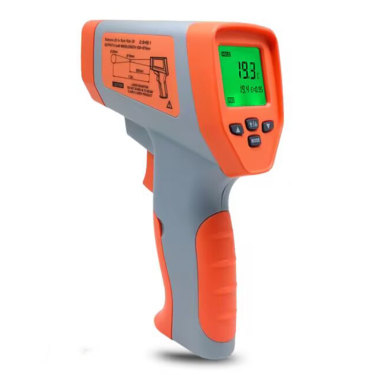
# How to Use a Cooking Thermometer for Perfectly Cooked Meals
## Introduction
A cooking thermometer is an essential tool for any home cook or professional chef who wants to ensure their food is cooked to perfection. Whether you’re grilling steaks, roasting chicken, or baking bread, using a thermometer takes the guesswork out of cooking and helps you achieve consistent, safe results every time.
## Why Use a Cooking Thermometer?
Many people rely on visual cues or cooking times to determine when their food is done, but these methods can be unreliable. A cooking thermometer provides an accurate measurement of the internal temperature of your food, which is the only sure way to know when it’s properly cooked. This is especially important for meats, where undercooking can lead to foodborne illnesses and overcooking can result in dry, tough dishes.
## Types of Cooking Thermometers
1. Instant-Read Thermometers
These are the most common type of cooking thermometers. They provide quick temperature readings (usually within 2-5 seconds) and are ideal for checking the doneness of meats, casseroles, and other dishes.
2. Oven-Safe Thermometers
These thermometers remain in the food while it cooks in the oven. They’re great for roasts and whole poultry, allowing you to monitor the temperature without opening the oven door.
3. Probe Thermometers
These feature a probe that stays in the food during cooking, connected to a digital display outside the oven. Many models have alarms that sound when the food reaches the desired temperature.
4. Candy/Deep-Fry Thermometers
Designed specifically for high-temperature cooking, these thermometers measure the temperature of oils for deep frying or sugar syrups for candy making.
## How to Use a Cooking Thermometer Properly
Step 1: Choose the Right Thermometer
Select a thermometer appropriate for what you’re cooking. For most meats, an instant-read thermometer works well, while a probe thermometer is better for large roasts or whole poultry.
Step 2: Insert Correctly
Insert the thermometer into the thickest part of the food, avoiding bones, fat, or gristle. For thin foods like burgers or chicken breasts, insert the probe from the side to reach the center.
Step 3: Wait for the Reading
For instant-read thermometers, wait until the temperature stabilizes (usually a few seconds). For oven-safe or probe thermometers, monitor until the desired temperature is reached.
Step 4: Clean Properly
Always clean your thermometer after each use with hot, soapy water to prevent cross-contamination.
## Recommended Internal Temperatures
Here are some key temperature guidelines for common foods:
- Beef, veal, lamb steaks/roasts: 145°F (medium-rare) to 160°F (well done)
- Ground meats: 160°F
- Poultry (whole or pieces): 165°F
- Pork: 145°F
- Fish: 145°F
- Egg dishes: 160°F
Keyword: cooking thermometer
## Tips for Best Results
Calibrate Regularly
Check your thermometer’s accuracy periodically by testing it in boiling water (212°F at sea level) or ice water (32°F).
Let Meat Rest
After removing meat
Comments are closed